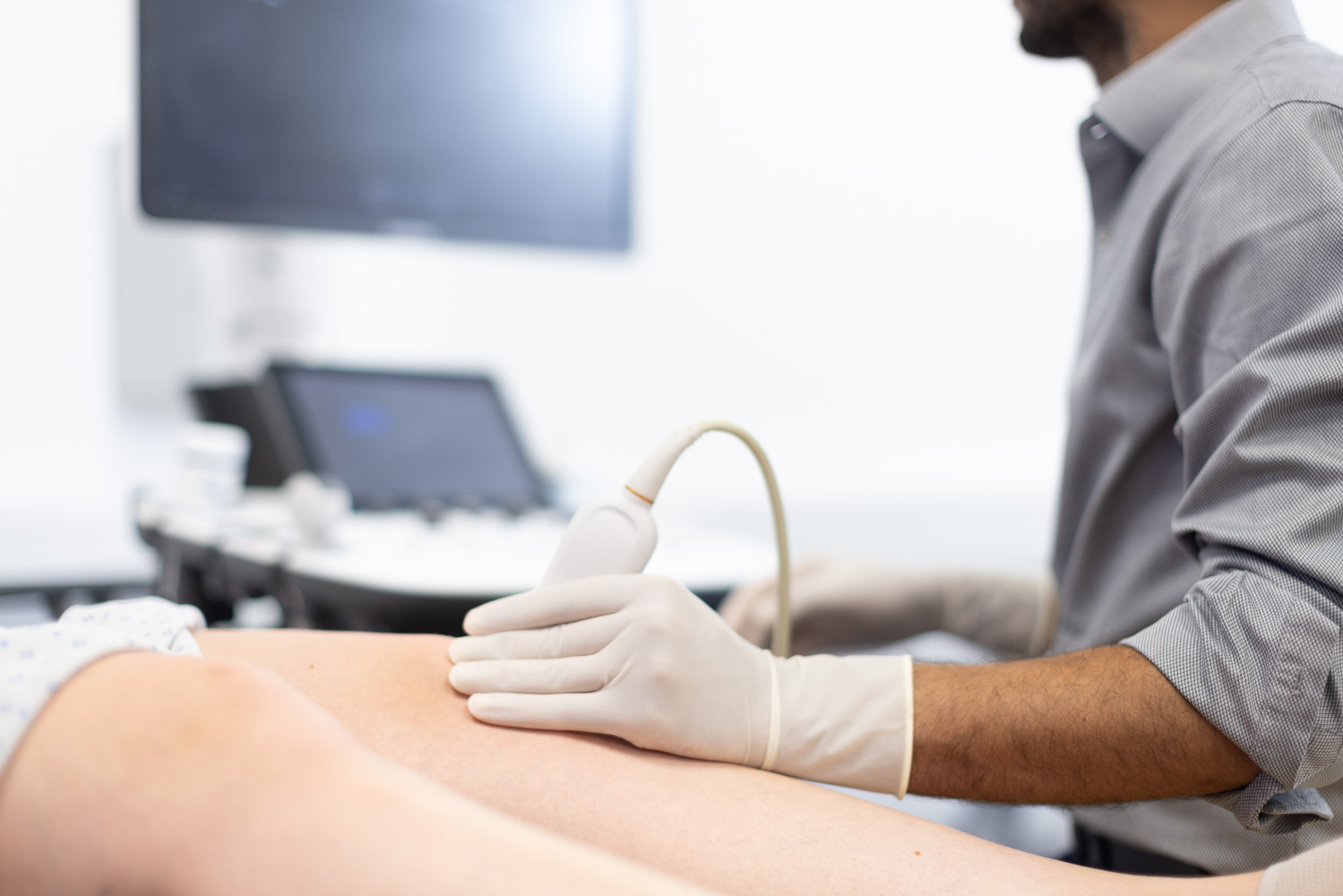The Effectiveness of Ultrasound-Guided Injections in MSK Treatment

In this Clinical Insight, we share a clinical reflection on the feedback of one of our patients, who underwent an ultrasound-guided injection for pain in her shoulder.
Our female patient recently visited Clinical and Rehabilitation Services at Health Sciences University for a steroid injection, using ultrasound for precision and targeted treatment.
The patient experienced a shoulder injury whilst playing tennis a few years ago and was in a lot of pain. She had various treatments and was recommended to have an ultrasound guided injection by her physiotherapist.
Patient Reflection
“I was in a lot of pain with my shoulder injury. I had physiotherapy treatment, an X-ray and an MRI scan, but it never got better. I also went to my doctor for injections. They weren’t able to guide the injections and only injected it in the general direction. Unfortunately, it wasn’t always successful.
“As it was so painful, I thought I should get this done properly and also get rid of the calcium which was deposited in my shoulder. So I made an appointment and came to see the consultant.
“My sister in South Africa had had exactly the same treatment about two years ago. She said it was incredibly sore, so I was very apprehensive.
“The consultant at Health Sciences University scanned my shoulder with the ultrasound machine. He saw exactly what the problem was, showed it to me on the screen and explained it. Then he injected the local anaesthetic. It didn’t take long to work.
“Then he did another injection to get rid of the calcium, which he said could be painful. In my case, it dissipated quite quickly. I could feel it, but it wasn’t painful in any way. He then injected the steroid medication into the bursa, which can be painful. It was a little sore, but as he had the ultrasound machine to guide him, he was able to see exactly where he was putting the injection and how it was going into the bursa.
“It really was very, very successful.
“I haven’t had any pain since the injection – it’s wonderful! I went swimming the other day. I am normally quite careful, although after the injection, I thought I would give the backstroke a go, as I haven’t done this in years. I did marvellously and went zooming across the pool!”
Clinical Reflection
This patient’s story is all too common; patients can experience shoulder and other musculoskeletal (MSK) pain for years and it is often unresponsive to rehabilitation. The decision to proceed with further treatment is a big decision, as there are instances such as in this case, where a blind injection (those carried out without imaging guidance) did not give a significant benefit. Patients are then left wondering what to do and where to go next.
Ultrasound guided injections have revolutionised the management of Musculoskeletal (MSK) conditions. Studies show that ultrasound guided injections have an accuracy between 95-100% and blind injections have an accuracy between 30-70% (Omer et al, 2021).
This patient’s story exemplifies the precision and effectiveness of the imaging guided approach. There are several benefits of using Ultrasound to support an injection. An initial scan is completed to ensure it is safe to proceed, and to assess if the injection will likely be beneficial. The needle is then visualised throughout the procedure, allowing the clinician to ensure the injection has gone into the correct location – this is the reason for the significant improvement in accuracy and outcomes from ultrasound versus blind injections.
Patient confidence in the procedure and treatment is incredibly important to achieving favourable outcomes, and demonstrating the accuracy to the patient ensures the patient can visualise themselves that the injection has been successful in finding its target, this increases the likelihood of patient recovery, with the patient being more likely to complete a subsequent rehabilitation program.
Once an injection has been completed successfully, it is only part of the clinical pathway to recovery. The aim of the injection is to remove the pain, allowing the patient to commence on a supported rehabilitation program. In this instance, our patient was referred by a Physiotherapist who is now able to proceed with a treatment plan to give the best chance of a lasting benefit.
Any intervention using steroid should be properly reviewed on a case-by-case basis to ensure that it is the best option in the patient journey. Conservative measures should be attempted first including activity modification, oral medication and rehabilitation.
Movement-based therapies and patient education is essential to support patients to help themselves. There are four main reasons when steroid injections should be considered; when the patient cannot complete rehabilitation due to pain, when they are in pain at night and not able to sleep, when there is limited or no response to treatment and where there is a sub-acute loss of function or increase in pain.
It has been found that steroid injections are likely to offer shorter term benefits, and that following a rehabilitation plan encompassing the basic rehabilitation principles patients can experience longer term relief.
References